How a hospital is coping with crumbling concrete
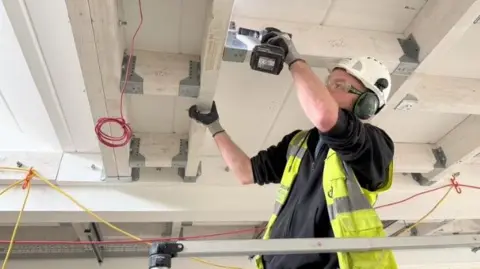 Qays Najm/BBC
Qays Najm/BBCAt the James Paget hospital on the Norfolk coast, supports are stopping 8,300 panels of concrete in its ceilings and walls from collapsing. Staff will eventually work in a brand new building, but how are they coping as repairs to make the current site safe continue around them?
The challenges facing the estates team at James Paget hospital are not unique. It is one of a number of English hospitals built using a cheaper type of concrete that is now at the end of its lifespan.
Disintegrating Raac, or Reinforced Autoclaved Aerated Concrete (Raac), is affecting several areas of the hospital including its maternity ward, which has had to close for about six months while the panels are reinforced.
The unit will not reopen before the end of August, but in the meantime maternity services have been relocated to the first floor close to theatres and the neonatal unit.
Elsewhere, ceilings in 11 out of 14 operating theatres are also being strengthened, with the work being carried out on two theatres at a time.
Engineers were so concerned about Raac panels in the hospital kitchen it was made to shut for more than a year, with meals brought in.
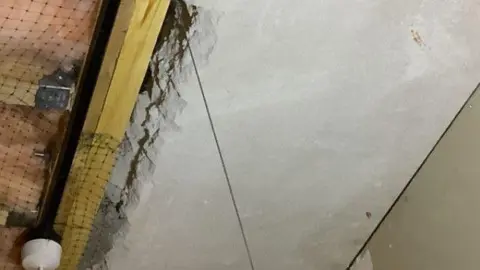 Qays Najm/BBC
Qays Najm/BBC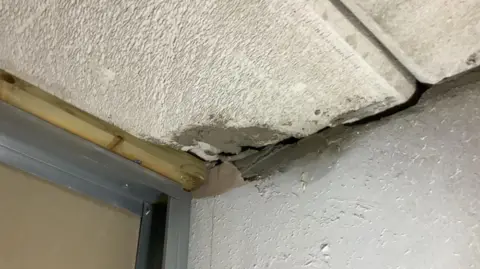 Qays Najm/BBC
Qays Najm/BBCStephen Balls, deputy director of estates and facilities, says without the beam supports there is "a real danger" of ceilings falling in.
"It's a mammoth task," he says.
He speaks from maternity ward 11, where his team has been working for the past few months.
"We usually take an 18-week period for our Raac panel mitigation work," he says.
"However, we have also taken the opportunity to upgrade our triage area at the same time."
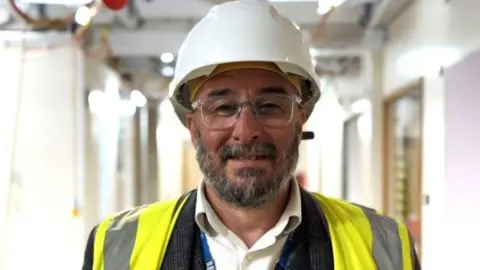 Qays Najm/BBC
Qays Najm/BBCRaac was developed in the 1960s and used in many public buildings, including hospitals, schools and leisure centres, until the 1990s.
It is much cheaper and lighter but weaker than reinforced concrete, and over time it deteriorates. Lengthy exposure to water can also make it crumble.
The material was only designed to last about 30 years. The James Paget in Gorleston-on-Sea, which serves patients in east Norfolk and north-east Suffolk, is now 43 years old.
The majority of the Raac panels at the Paget, some 75% to 80%, are in the ceiling, with the rest in walls.
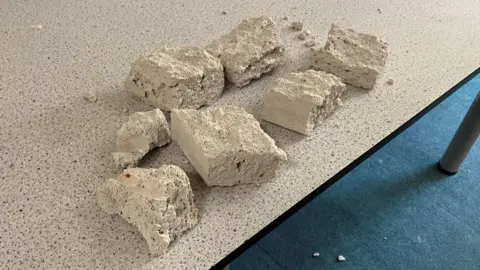 Matt Knight/BBC
Matt Knight/BBCSo far, 60% of the work on Raac affected areas has been completed and the total cost of this remedial effort will be about £34m.
Mark Flynn, director of strategic projects at the hospital, says the work so far is "going really well", with most of the reinforcement work in non-clinical areas having been done.
He says staff and NHS England have provided great support to ensure the hospital remains open and the impact on patient services stays minimal.
"I am pleased to say that we are in a position to maintain patient services, for patients and staff," says Mr Flynn.
"About 86% of our site is constructed with Raac, and obviously we are continuing to work to maintain safety, and we make sure all of the works are done to a really high standard."
 Qays Najm/BBC
Qays Najm/BBCAli Guenaoui, catering operations manager, says the whole kitchen ceiling has been made of Raac, causing "a huge, huge, problem".
The area has been reopened after the panels' lifespan was extended.
Mr Guenaoui says: "It's been challenging, very, because with a big project like that it wasn't going to just be overnight, but I think the team have done a fantastic job.
"We had to find a different way of providing food - food coming in and heating it up, which is not our normal style.
"We've waited a long time but now we have so many benefits. It was a custom designed kitchen - we told them how we wanted it and they came and did it."
 Qays Najm/BBC
Qays Najm/BBCThe repairs to the hospital should be done by 2028, according to Mark Flynn, director of strategic projects.
By then, work on a new hospital will be under way on a site to the west of the current hospital complex.
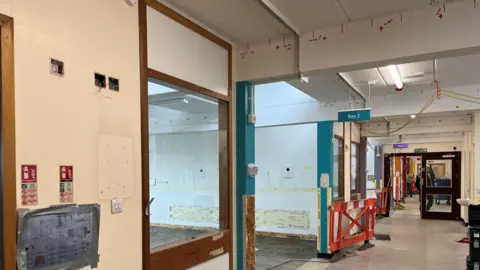 Qays Najm/BBC
Qays Najm/BBCThe new hospital, which has a budget of £1.5bn, will also have room to expand as it will be double the footprint of the existing site and have about 600 beds for patients.
Funding for the new site has come from the government's New Hospital Programme, while the Raac repairs have been met through separate funding from NHS England.
"We're really pleased to have now secured the land for this new hospital," Mr Flynn says.
 Qays Najm/BBC
Qays Najm/BBC"We will have a completely separate construction site for the new hospital, so we hope to minimise the impact as much as possible... during what's going to be a long build period."
Once the new site is built, in about a decade's time, the existing hospital site will be demolished.
Mr Flynn says: "It's great that we are part of the National Hospital Programme and really fantastic that we've secured the land.
"I feel ecstatic, it's brilliant."
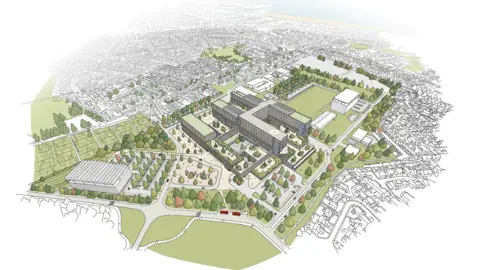 Perkins & Will/James Paget
Perkins & Will/James PagetFollow Norfolk news on BBC Sounds, Facebook, Instagram and X.
